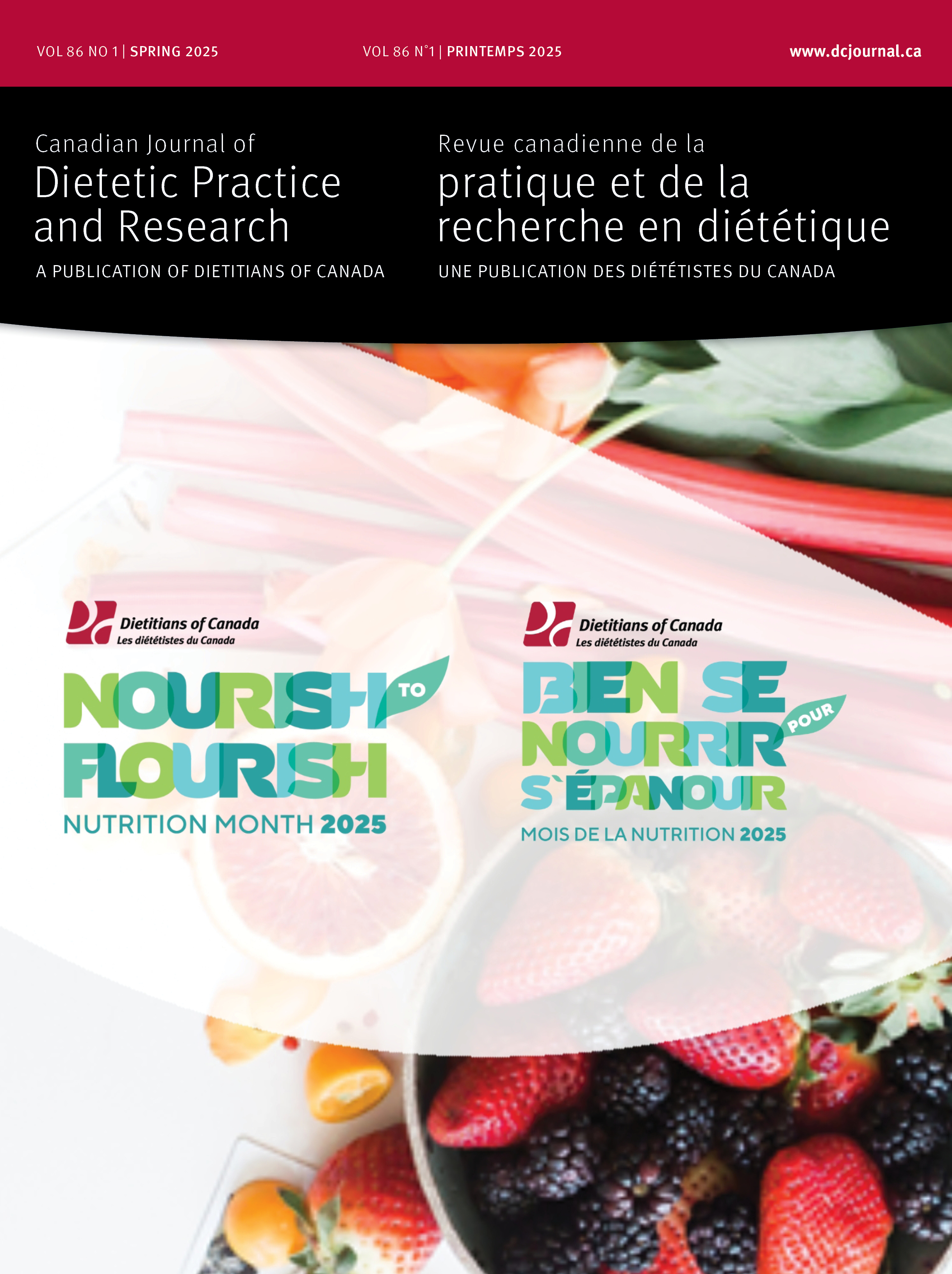Abstract
Purpose: To assess dietetic students’ anxiety levels before and after a series of simulations and to document students’ perceived sources of anxiety while completing simulation-based learning activities.
Methods: A mixed-method convergent pilot study was conducted. Students enrolled in a Nutrition Assessment course that included a series of four simulations were invited to participate. Students completed an online pre-post simulation survey and engaged in individual interviews and a focus group discussion. The questionnaires included demographic questions and the French State-Trait Anxiety Inventory. Nonparametric tests and thematic analysis were used to examine data.
Results: Fourteen students participated in the study’s quantitative component and seven in the qualitative component. There was a significant decrease in trait (44.5 ± 13.8 vs 32.0 ± 14.0, P = 0.01) and state (47.0 ± 11.2 vs 33.0 ± 18.0, P = 0.05) anxiety from pre- to post-simulations. Individual factors influencing students’ anxiety levels were stress and self-confidence. External factors influencing students’ anxiety levels were unknown situations, observers, patient profiles, observers’ feedback, preparation level, and academic setting.
Conclusions: Our findings suggest that ensuring the educator is not present during simulations, advance preparation, and reassurance that simulations are a learning and not an evaluation activity may be effective pedagogical strategies for dietetic educators to reduce learners’ anxiety and facilitate competency development.
Résumé
Objectif. Évaluer les niveaux d’anxiété des étudiants en diététique avant et après une série de simulations, et documenter les sources d’anxiété perçues par les étudiants lors d’activités d’apprentissage par simulation.
Méthodes. Une étude pilote convergente à méthode mixte a été réalisée. Des étudiants inscrits à un cours d’évaluation nutritionnelle impliquant une série de quatre simulations ont été invités à participer. Les étudiants ont répondu à un sondage en ligne avant et après la simulation, et ont participé à des entretiens individuels ainsi qu’à une discussion de groupe. Les questionnaires comprenaient des questions démographiques et la version française du State-Trait Anxiety Inventory [Inventaire d’anxiété situationnelle et de trait d’anxiété. Les données ont été examinées au moyen de tests non paramétriques et d’analyses thématiques.
Résultats. Quatorze étudiants ont participé au volet quantitatif de l’étude et sept, au volet qualitatif. Une diminution significative de trait d’anxiété (44,5 ± 13,8 vs 32,0 ± 14,0, P = 0,01) et de l’anxiété situationnelle (47,0 ± 11,2 vs 33,0 ± 18,0, P = 0,05) a été observée entre la période précédant et la période suivant les simulations. Les facteurs individuels influençant le niveau d’anxiété des étudiants étaient le stress et la confiance en soi. Les facteurs externes influençant le niveau d’anxiété des étudiants étaient les situations inconnues, les observateurs, le profil des patients, la rétroaction des observateurs, le niveau de préparation et le cadre universitaire.
Conclusions. Nos résultats suggèrent que l’absence de l’éducateur pendant les simulations, la préparation préalable et l’assurance que les simulations sont une activité d’apprentissage et non d’évaluation pourraient être des stratégies pédagogiques efficaces que pourraient adopter les éducateurs en diététique pour réduire l’anxiété des apprenants et faciliter le développement des compétences.



